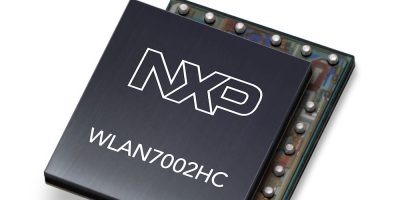Equipped with an architecture designed to maximise use of the 6GHz band, the QCS-AX2 chipset family is optimised for high-throughput Wi-Fi applications, such as access points, gateways, and mesh networking solutions for dense environments and under-served areas, says ON Semiconductor.
The QCS-AX2 supports the 6GHz spectrum band based on the enhanced Wi-Fi 6E standard. The chipset is built on an integrated baseband and RF architecture that supports key Wi-Fi 6E features, such as orthogonal frequency division multiple access (OFDMA), advanced multi-user, multi-input, multi-output (MU-MIMO), 160MHz channel support for faster speeds and SmartScan channel selection.
The family consists of the QCS-AX2-A12, tri-band (6GHz/5GHz/2.4GHz) with AdaptivMIMO technology. It supports flexible 8×8 or 4×4 configurations, the QCS-AX2-T12, a tri-band concurrent 4×4 operation for high performance, cost-effective router solutions, says ON Semiconductor, and the QCS-AX2-T8, a tri-band concurrent eight-stream configuration for mesh nodes and mainstream access points.
The Federal Communications Commission anticipates the opening of the 6GHz band in the US later this year, with up to 1,200MHz of newly available spectrum to be designated for Wi-Fi and other unlicensed use. With almost five times more spectrum than the current 2.4 GHz and 5GHz bands combined, the 6GHz band is accelerating the development of Wi-Fi 6 applications. The 6GHz client ecosystem will take time to build but the Wi-Fi infrastructure devices, such as gateways, routers, and access points will need to continue to support existing dual band (2.4GHz/5GHz) clients.
ON Semiconductor’s Wi-Fi 6E products accommodate the transition to the 6GHz band with AdaptivMIMO technology. A Wi-Fi 6E infrastructure device with AdaptivMIMO allows the network to operate in the 5GHz or 6GHz band depending on the clients present in a subscriber’s home network to maximise performance, coverage, and utilisation. The QCS-AX2 series provides the Wi-Fi performance and connectivity in congested environments to multiple devices that applications demand.
ON Semiconductor is now sampling the QCS-AX2 solutions to customers.







